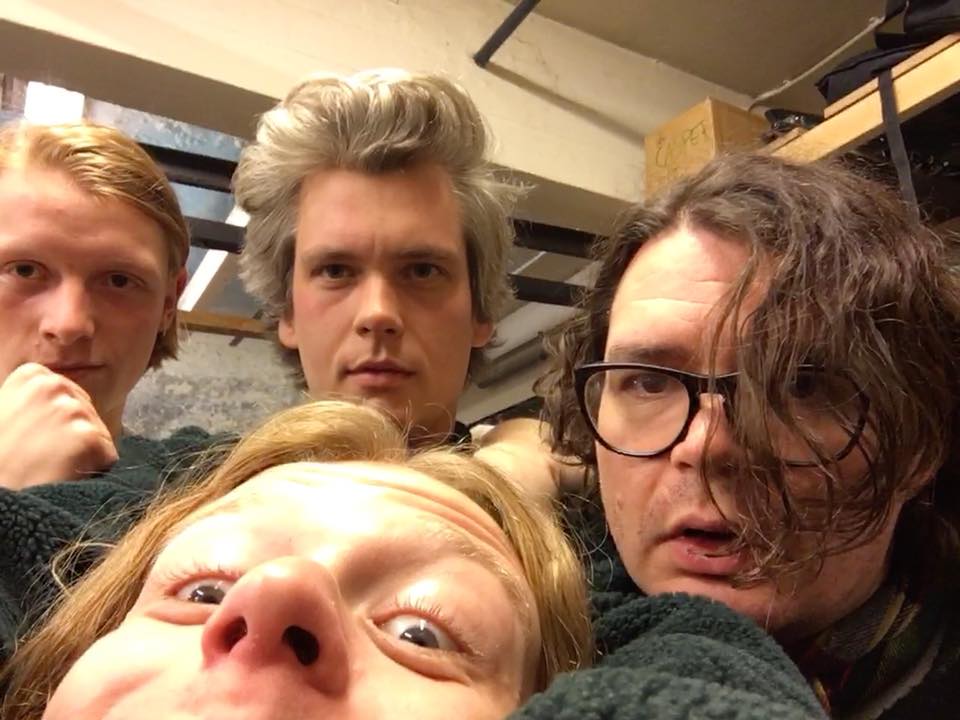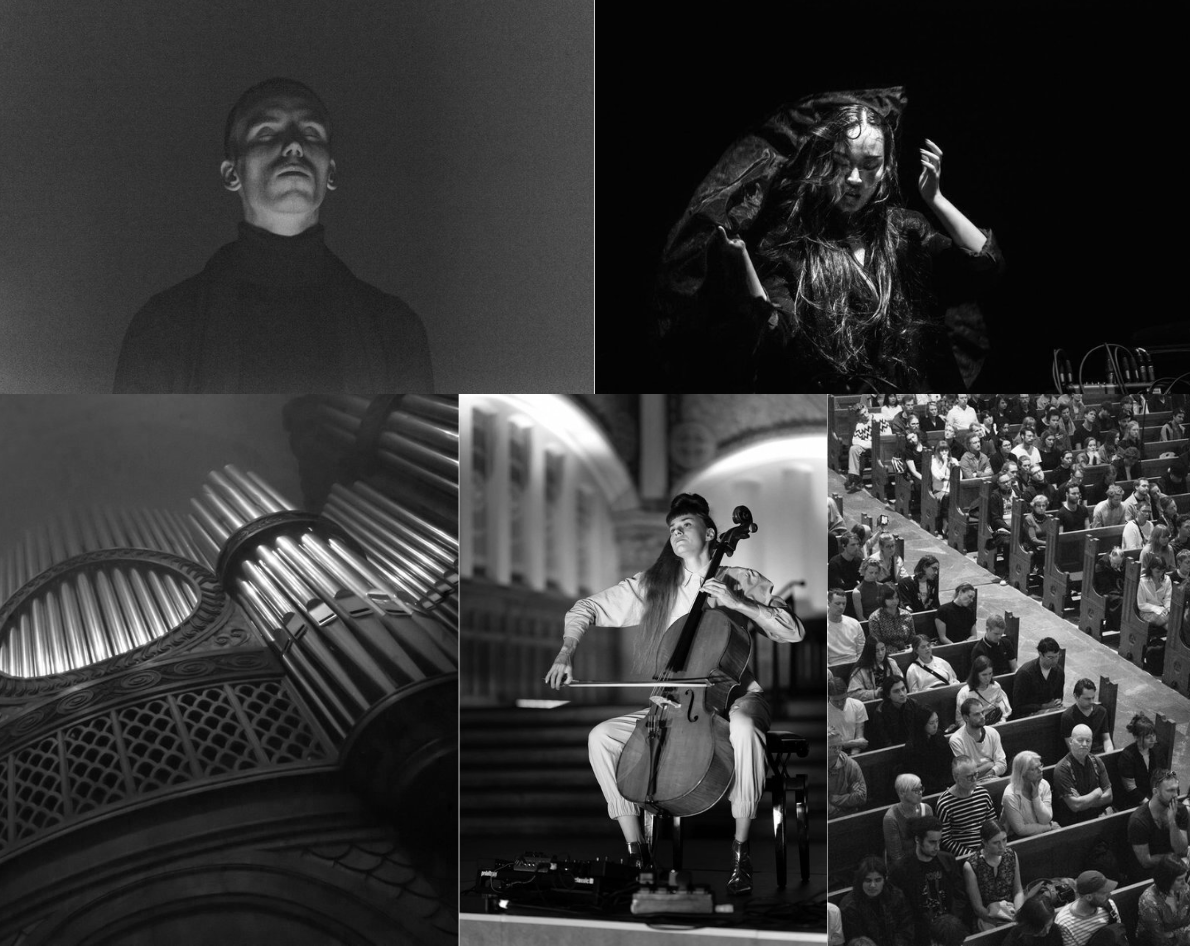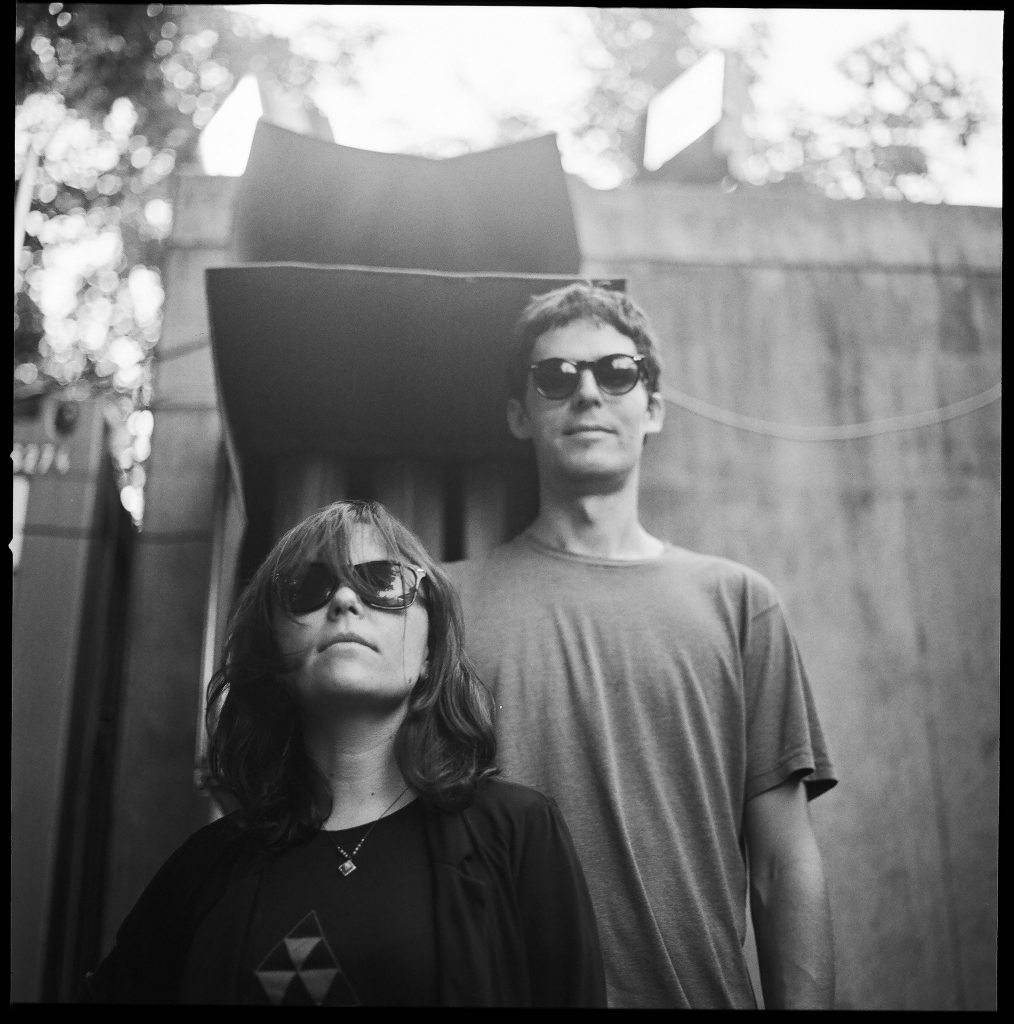Irene Bianco – Finding beauty in decay (interview)
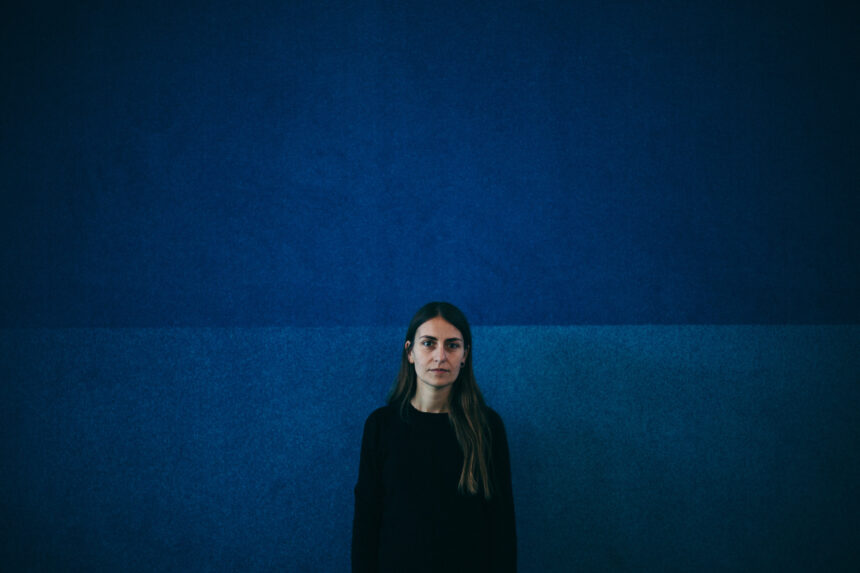
Interview by Ivna Franić. Photo by Malwa Grabowska.
Italian percussionist Irene Bianco’s debut album Kronblade, released in October 2024 via Valentina Magaletti and Fanny Chiarello’s wxmen-focused label Permanent Draft, garnered attention for its imaginative and subtly genre-bending approach to percussion. A collection of electro-acoustic compositions centered around percussion with added electronics and field recordings, Kronblade captivates with its idiosyncratic explorations of various emotional states through an experimental sonic palette.
A fixture on the local scene as a solo artist, freelancer, member of the all-female collective Damkapellet and the seven-piece Wolfskin Ensemble, Irene Bianco keeps busy with many different projects and live performances. She has also been selected for the 2024/2025 artist roster of the SHAPE+ (Sound, Heterogeneous Art and Performance in Europe) platform, the European platform and network of partners dedicated to promoting innovative music and supporting the careers of selected emerging artists. We caught up with her to talk about her work, her musical journey, and projects like her residency at this year’s Intonal Festival.
P/A: You’ve been in Copenhagen for a long time now. How did you end up here in the first place?
Irene Bianco: “Yeah, it’s been a while [laughs]. When I finished my studies in Italy, I wasn’t sure what the next step could be. There were some teaching opportunities, but I was not really interested in that at the time. My teacher suggested some places where I could continue my education, so I came to Copenhagen for a few months and ended up staying here. I liked it – we had a good percussion class at the time. I’d also applied to other places, but I already had friends here, so it felt easier to stay.”
P/A: Were you always into music and working with music? How did you end up at a classical conservatory?
IB: “Yeah. I was interested in playing drums. My big brother is a guitar player, so my parents didn’t want to push me too much into music, but when I decided that’s what I wanted to do, they were like – okay, then you need to get a degree [laughs]! In Italy, the only degree you could get in that field was actually in classical music, there wasn’t any kind of pop course where I could play drums. So I did that and then I decided to go to the conservatory and do percussion because I’d had training in drums.”
“I like to play around. (…) That’s why I play percussion at the end of the day, because I get bored very easily.” – Irene Bianco
P/A: You use a lot of non-instrumental objects and idiophonic instruments, such as bells and wind-up toys – where does your interest come from and what do you want to get out of it?
IB: “I just like to play around. It gives me a little bit more freedom, especially because I had a lot of instrumental training. It feels like – okay, I can explore something without having any prior knowledge of it and maybe I already have the tools anyway. I can use those same tools with something that’s a little more abstract, it’s a little more free, it allows me to use my imagination. Usually I might just try something, see how it works, and then I’ll try to collect objects to use. I think that’s why I play percussion at the end of the day, because I get bored very easily.”
P/A: …and with percussion you can use a lot of different things?
IB: Yes!
P/A: At your show at KoncertKirken in February as part of the Vinterjazz festival, you also used these motion sensors…
IB: “Yes, I used them at the Cap30 show with Lone Aagot as well. She had one and I had one. I have these sensors because I played a piece for my final concert where they were supposed to use them and then I asked them to reprogram them with some sounds for my performance. There are a couple of tracks where I have these layers and I thought it would be nice to not have all the electronics on the back track. That way you can play it a little bit more live – even if it’s not super clean, but that’s not the point of my music.”
P/A: It feels like you’ve been doing a lot of live shows lately. How much of that is related to the album you released at the end of last year versus your work as a member of various collectives?
IB: “Some shows were arranged before and some are more last minute arrangements. I contacted some people when the record came out, but also, for example, I had this thing I wanted to try with Lone Aagot, who is a violinist, and then playing this small venue [Cap30, ed.] seemed like a good opportunity to do that. The shows with Damkapellet weren’t organized by me – our line-up usually depends on the instrumentation, so I only play when they need a percussionist.”
P/A: In addition to your solo work, you’re also a member of the Wolfskin Ensemble and the Damkapellet collective. Can you tell us something about your work with Damkapellet?
IB: “Working with Damkapellet is mostly project-based – the collective has been around for almost ten years now. Usually one of us is in charge of organizing a certain project. We get some requests and commissions, so someone takes charge depending on their availability at the time or what the commission is about. For example, I’m in charge of something in September with a Swedish composer, so I’m the contact person for arranging that. It’s not too organized or rigid in the way that you have to do something, it’s more like – I’m going to do it because I want to and I have time, so that’s quite nice. We have meetings, of course, and sometimes it’s a bit of a struggle to find the time to work together because we’re all busy people, but it’s also easy because we’ve been doing it for a long time.”
P/A: Is playing in different constellations typical for artists coming out of a conservatory? How did you expand your connections from the classical to the experimental music scene?
IB: “For the first three or four years I was just at the classical conservatory, so I was mostly in those circles. It got a little tiring after a while – back in Italy I went to a classical conservatory, but I also had friends from high school and stuff, whereas here all my contacts were from the same circle. I felt like I was missing something – especially if I was going to stay here, I couldn’t just do school. Then I started looking at other things. It was not easy at first.
One of the things that helped was that I started working with Damkapellet. They had a wider pool of contacts and contacts abroad, so we did some projects that were not exclusively classical. And then I just went to a lot of concerts, sometimes alone, and I started to meet people who weren’t connected to the music academy. For example, Valeria Miracapillo, who mastered my album, I just met her at a concert and we became friends – she’s a person I hung out with a lot before she left Copenhagen.”
P/A: Was this different from the way things were for you in Italy?
IB: ”In Italy, I always kind of had both because I played in bands – I used to play drums and vibraphone. When I moved here, it was a bit of a shift, like, okay, I got in and I am going to fully commit to practicing [laughs]. Also because maybe before it wasn’t a given to have access to the same facilities as here, so there was a part of me that really wanted to take advantage of that opportunity. But after a while, I felt like that was not the only thing I needed, especially since percussion is such a broad instrument. Then I started playing more contemporary music, and that gave me more room to experiment.”
“Even if things don’t look great, you can still find some beauty in them.” – Irene Bianco
P/A: Let’s talk a little bit about your record Kronblade. It’s quite abstract, but it also has a strong emotional aspect… Is that something you consciously tried to achieve or is it something that just comes out regardless of the form of the music?
IB: “It’s my first album, it’s a bit tough putting yourself out there. Maybe a few years ago I wouldn’t have done it. So actually yes, there’s a narrative to the album, every track has a little bit of a backstory. There were some sounds that I had for a while and maybe they weren’t connected, but I was trying to make a collage that made sense as a whole.
The first two tracks are actually new because everything I had was a bit more droney and I wanted to have some more percussive parts, so they’re actually the newest thing I wrote the summer before recording. There’s a bit more drumming on them and the others are a bit more melodic. I was surprised at how well the tracks worked together, even if not all of them were super connected.”
P/A: What’s the story behind the name of the album (“petals” in English) and the track that gives it its title?
IB: “The track “kronblade i” basically started because I was living with these two artists – they are older than me, a couple – they used to buy flowers, but they wouldn’t replace them until they were really dead. That would never happen when I lived with my parents [laughs]. I was really fascinated by this decay. A couple of years ago I actually played some tracks from the album before I recorded it because I had some live shows and I had to play some stuff – I got to try them out and they worked, so I wanted to record the album. At that time I was not doing so well, I felt a bit like things were falling apart. I wasn’t finding as much meaning in music and what I was doing, but I had to do these live shows [laughs]. It wasn’t so easy, but it also felt like, okay, yeah, maybe even if things don’t look great, you can still find some beauty in them. The song “kronblade i” has kind of three stages, three parts – it’s pretty energetic in the beginning, like when you find what you want, then it’s a little bit more static, and at the end it’s very mesmerizing, symbolizing this decay.”
P/A: How did you end up releasing your album on Permanent Draft? Your album is the first release on the label that isn’t by Magaletti or Chiarello.
IB: ”I’ve lived here for a while, so I thought it would be interesting for me to try and reach out to someone outside of the Copenhagen scene. Coming from a classically trained background, I didn’t really know how to go about it. I was basically looking for a good fit – if it’s something I don’t really feel like doing, then I shouldn’t do it. Maybe it sounds a little picky, but I just thought that if it’s not a good fit, then I might as well go with a local label, which is also good because there are quite a few good local labels. I first heard about Valentina Magaletti thanks to my brother. I really liked this duo she had, Tomaga. I listened to that a lot, but maybe not so much to all her other stuff.”
P/A: Well, she does have a lot of projects!
IB: “Yeah [laughs]! Anyway, I really liked her work, so I just sent an email to Permanent Draft. Because Valentina is very busy, I think it was actually her partner who listened to my album first, but then she [Magaletti, ed.] had a show in Copenhagen, so we also met in person. And we decided to do it!”
P/A: You also played one of the nights of Magaletti’s recent residency at Café Oto in London?
IB: “We didn’t play together – I hope that will happen at some point – but she booked me for her residency, which was really nice.”
P/A: Speaking of residencies, you’re doing one in connection with this year’s Intonal Festival in Malmö. What is the idea behind the project?
IB: “Inkonst and SHAPE+ Platform are bringing together an artist who is on SHAPE+ this year, which in this case is me, and two local artists, Sara Hausenkamp aka 55 Cancri e and Adèle Tornberg.
Sara and I are doing the musical part of the performance and Adèle is doing the visuals. I met Sara a few times in my studio and we clicked, the process feels very natural. With Adèle, we decided to work on a theme that also relates to this beauty of decay that I mentioned in relation to my record. This transition from one state to another, like a crossroads in the middle where everything is a bit blurred. I’m doing electronics, that’s kind of my setup, and some drums, I’ll have a little more noisy part. Sara has a guitar and a loop station. I think it’s nice because usually I have a big setup for my solo shows, but in this performance we’re kind of equal, we complement each other well.”
P/A: Was it the festival that chose the artists they wanted to put together?
IB: “Yeah, and I actually thought it was great that they chose the artists. I guess if it was up to us, we would probably just end up working with someone we already know.”
P/A: Has being part of the SHAPE+ Platform opened up any new opportunities for you? Or is it mostly about exposure?
IB: “Sure, yeah. It’s also new for me to have a little more of a spotlight on my solo project. And it’s good timing, too. When I got in, I thought it would be good for me for the same reason I tried to release my record on a label outside of Copenhagen, just to make some connections in other places. It definitely helped! It’s nice to have the opportunity to play some shows in different places, to do this residency in Malmö and another one in Belgrade at the end of May.”
P/A: Do you feel like you got to play some festivals and events that you might not have gotten booked for otherwise?
IB: “I guess so! Although they only really promise to get you on one festival, and we’re fifty-two artists, so it’s not like you suddenly get booked a lot just because you’re on SHAPE+. I didn’t expect too much, but I think it’s probably good in the long run. It’s a platform that’s pretty well known for that kind of music, so it gives you access to things that might not be so easy to access otherwise.”
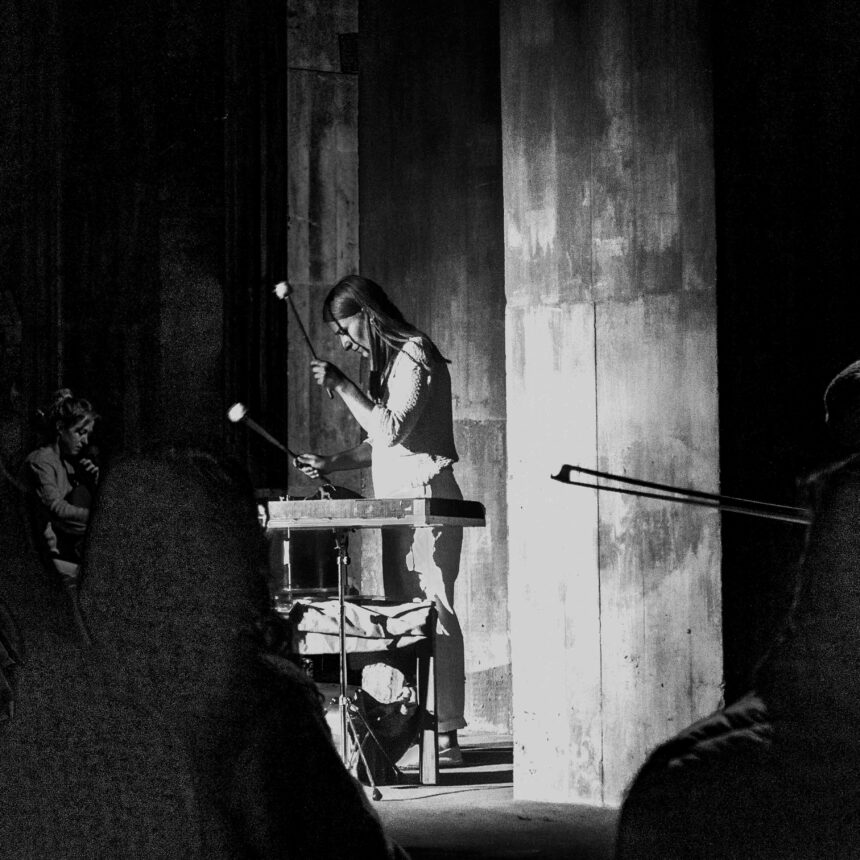
P/A: Are you working on any new releases or are you too busy with the live shows and collaborative projects?
IB: “I’ve got a lot of live shows lined up right now, so it’s a bit of a busy period. But I’m forcing myself to work on the music – I’ve got a couple of shows in May where I’d like to hopefully play some new stuff. I also have an acoustic set on April 12 at Brønshøj Water Tower, so that’ll be different. It won’t be too long before I have some new material, but making an album is kind of a long process and I don’t have a deadline, so I’m not sure when I might release something. But I do have some stuff in my head. I want to use some more instruments, maybe get some other people involved to record some stuff, I haven’t done that before.”
Irene Bianco, 55 Cancri e, and Adèle Tornberg are having an open studio at Inkonst on Tuesday, April 8th from 18:00. Bianco is also playing Brønshøj vandtårn on Saturday, April 12, alongside Lori Goldston and Bjarke Rasmussen.

